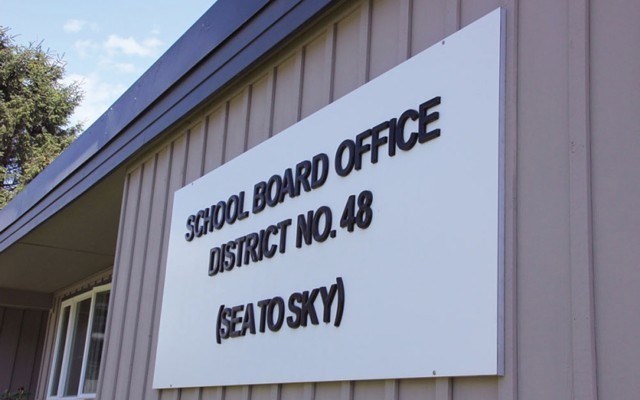With the news yesterday that students across B.C. will return to class this September, officials from School District 48 (SD48) have several weeks to iron out the details of the province’s new cohort learning model.
On Wednesday, July 29, provincial education minister Rob Fleming announced the full reopening of B.C.’s schools on Sept. 8 with enhanced safety measures and a new learning model in place that will see students and staff organized into consistent learning groups.
Based on advice from provincial health officer Dr. Bonnie Henry, the cohort model is intended to limit the number of people each student and staff member come in contact with, reducing the risk of COVID-19 transmission and allowing for quicker contact tracing by health officials. Cohorts for elementary and middle school students and staff will be capped at 60 people, while secondary schools will see cohorts limited to 120.
Sea to Sky School District superintendent Lisa McCullough envisions the cohort model will be easier to implement in the lower grades than in high schools, particularly for graduating students.
“We’re excited to have the kids back, but it’s going to take a lot of planning time to figure out what’s the best way to do this,” she explained. “I think the real tricky things are going to be in the secondary school programming for our students in the graduation program and needing certain courses for their post-secondary and graduation goals. Figuring out a cohort model where we still support each one of those students in being able to achieve those individual goals is really important to us.”
In a July 30 letter to parents, McCullough noted that online learning might be used to further support graduating students. She also added that the learning plan would accommodate students with specific learning needs.
“We will be earnestly planning to ensure that every student gets the support that they need, and in order to do that, of course, the teachers need support for all the diversity of learning needs that exist within a cohort,” she said.
Some key details of the cohort model still need to be ironed out. McCullough said the learning groups will remain together for a determined amount of time, and measures will be put in place in the event of a change to the groupings.
“The cohort models themselves will just take time to set down, because we’ll want to do that on a very personal level for our students in order to get the right teachers in the cohort,” she said. “There may be semester changes and things where we will change cohorts, and then there will be a health protocol for those kinds of changeovers.”
Specific plans around lunch breaks, recess and “mobility in the school” still need to fleshed out as well, McCullough added.
With less than six weeks before students return to class, the BC Teachers’ Federation has called for more time to fully develop a back-to-school plan that will keep everyone safe.
“The reopening needs to be safe, careful, and get the buy-in of teachers, support staff, parents, and students,” said federation president Teri Mooring in a July 29 statement. “If the plan is rushed or too many questions are left unanswered, it won’t be successful. Bringing everyone back all at once, even with some version of a cohort model, on the first day after the Labour Day long weekend, is too much too soon given the many unanswered questions in today’s announcement.”
But with the experience the district gained in June when some students chose to return to in-class learning proved invaluable for September’s restart plan, McCullough said.
“We have all of our leadership team coming back to work early in order to prepare for the cohort model, keeping in mind that most of our safety planning was done previously because we had the opportunity to bring students back in June,” she noted. “So there will be additional measures, but they will be enhancements to an already successful safety plan.”
As it prepares to enter Stage 2 of B.C.’s Education Restart Plan, Victoria has also committed a one-time $45.6-million investment to support school districts as they increase sanitation protocols. This will include increased cleaning of high-contact surfaces, more hand-hygiene stations, and the availability of masks upon request. (Masks will not be mandatory in schools, but recommended and provided in situations where physical distancing is not possible.)
“We’re going to create a safe environment for our students and staff. That’s ultimately the No. 1 job over the next few weeks, and student learning comes after that assurance that we’ve got a safety plan protocol that works,” McCullough promised. “We’re looking forward to everybody showing up when that first day of school comes so we can get organized quickly to support everybody.”
For more on this story, pick up next Thursday’s issue of Pique.




